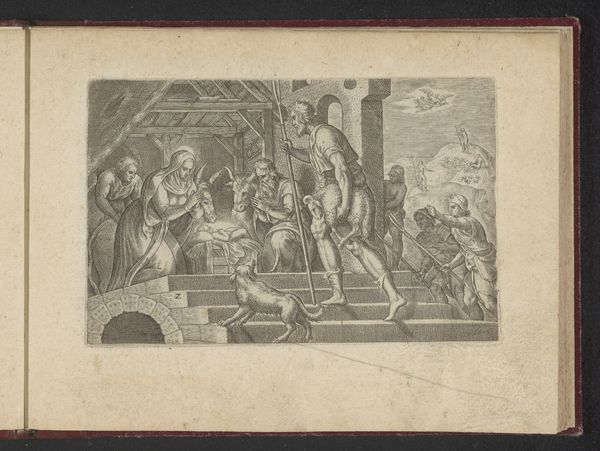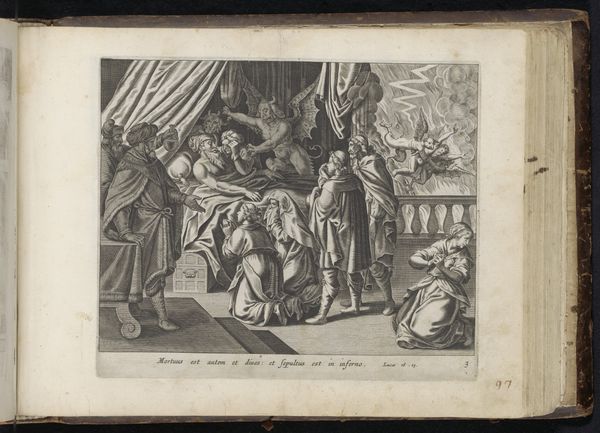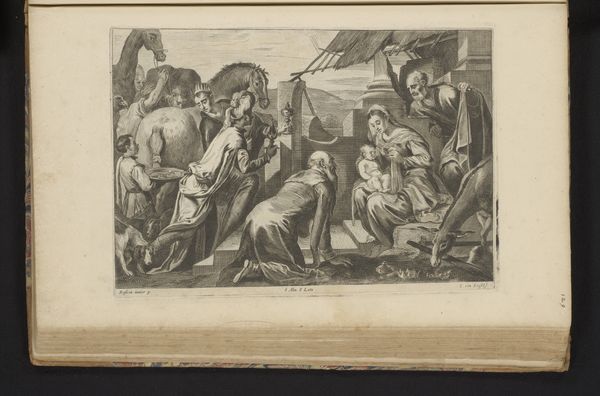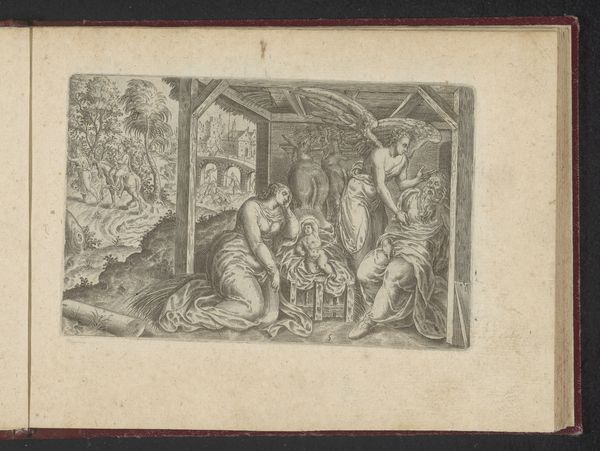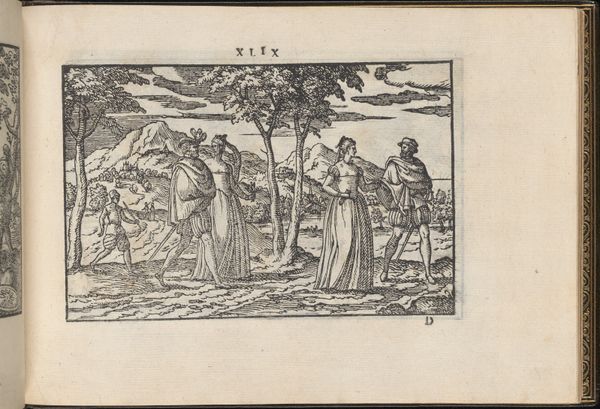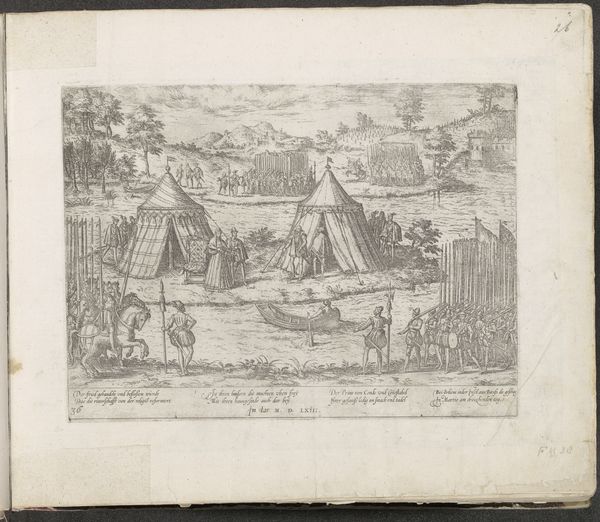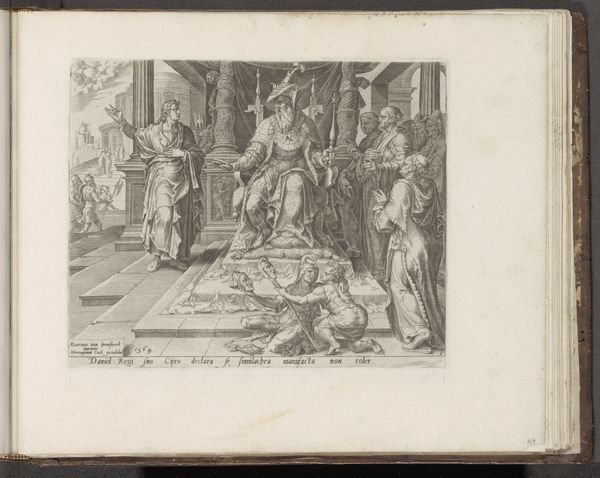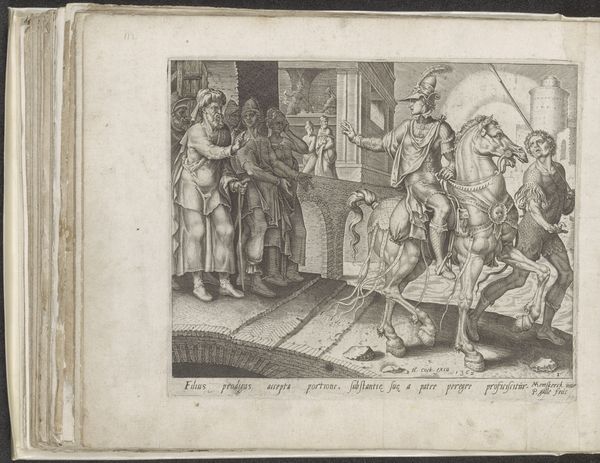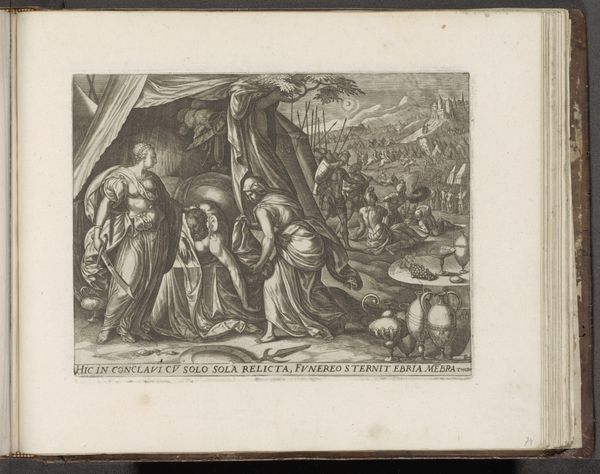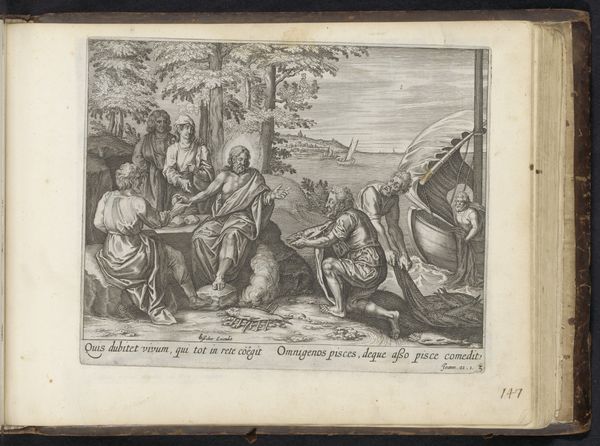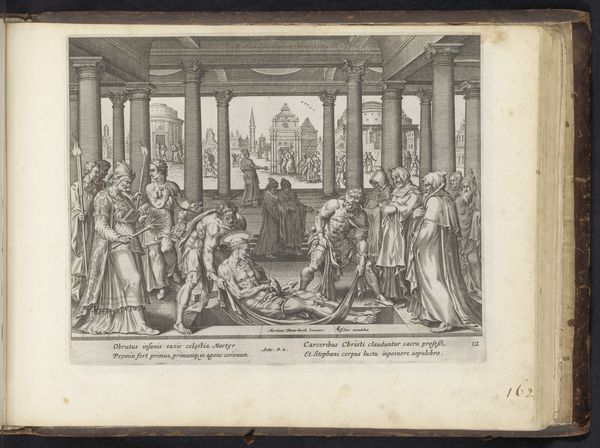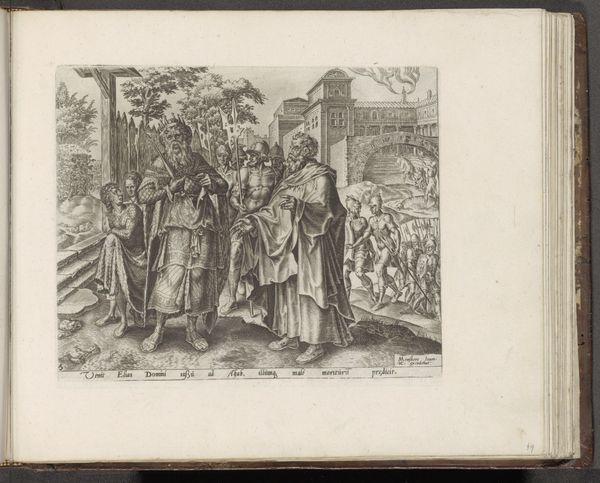
print, engraving
#
narrative-art
#
baroque
#
dutch-golden-age
# print
#
landscape
#
figuration
#
coloured pencil
#
engraving
Dimensions: height 200 mm, width 280 mm
Copyright: Rijks Museum: Open Domain
Curator: Here we have "Emmaüsgangers," created sometime between 1585 and 1646, by Julius Goltzius. This piece, currently held at the Rijksmuseum, presents a narrative scene rendered through the technique of engraving. Editor: The initial impression is striking—it is the crispness of the lines, the stark contrast, and the clear, almost intellectual feel it conveys despite depicting such a significant biblical scene. Curator: It illustrates the biblical narrative of the Road to Emmaus. Goltzius uses a very Netherlandish landscape as the backdrop for this pivotal moment, subtly intertwining the spiritual with the everyday life of the time. We see Christ appearing to two disciples after his resurrection, though they do not recognize him. This theme resonated strongly during the Reformation. Editor: Look at the composition, though—the figures are dominant, almost pushing against the picture plane. The lines defining the folds of their garments, the rendering of their faces, the detail of the foliage, even the architectural details of the village, create an intriguing balance between dynamism and meticulous detail. It almost seems that the artist is creating several centers of interest in order to explore the composition more fully. Curator: The placement of this scene within a distinctly Northern European context should not be ignored. The political and religious turmoils of the time shaped the perception and acceptance of religious art. Goltzius walks a tightrope between devotional representation and humanist expression, and it is clear how he uses that interplay. Editor: True, yet look again how the artist uses light and shadow. Notice how light seems to originate from different places simultaneously and this disrupts the composition. Is it an artistic choice for expressive effect, or is it due to practical problems with mastering the engraving technique? Curator: Regardless of the intention, it speaks volumes about the visual culture of the era, appealing to a specific patronage. The choices here say just as much about that society as they do the gospel story it illustrates. Editor: I leave with a greater awareness of just how compelling an engraved surface can be. The richness of visual data for such seemingly spartan material, line. I found myself increasingly lost in it!
Comments
No comments
Be the first to comment and join the conversation on the ultimate creative platform.
